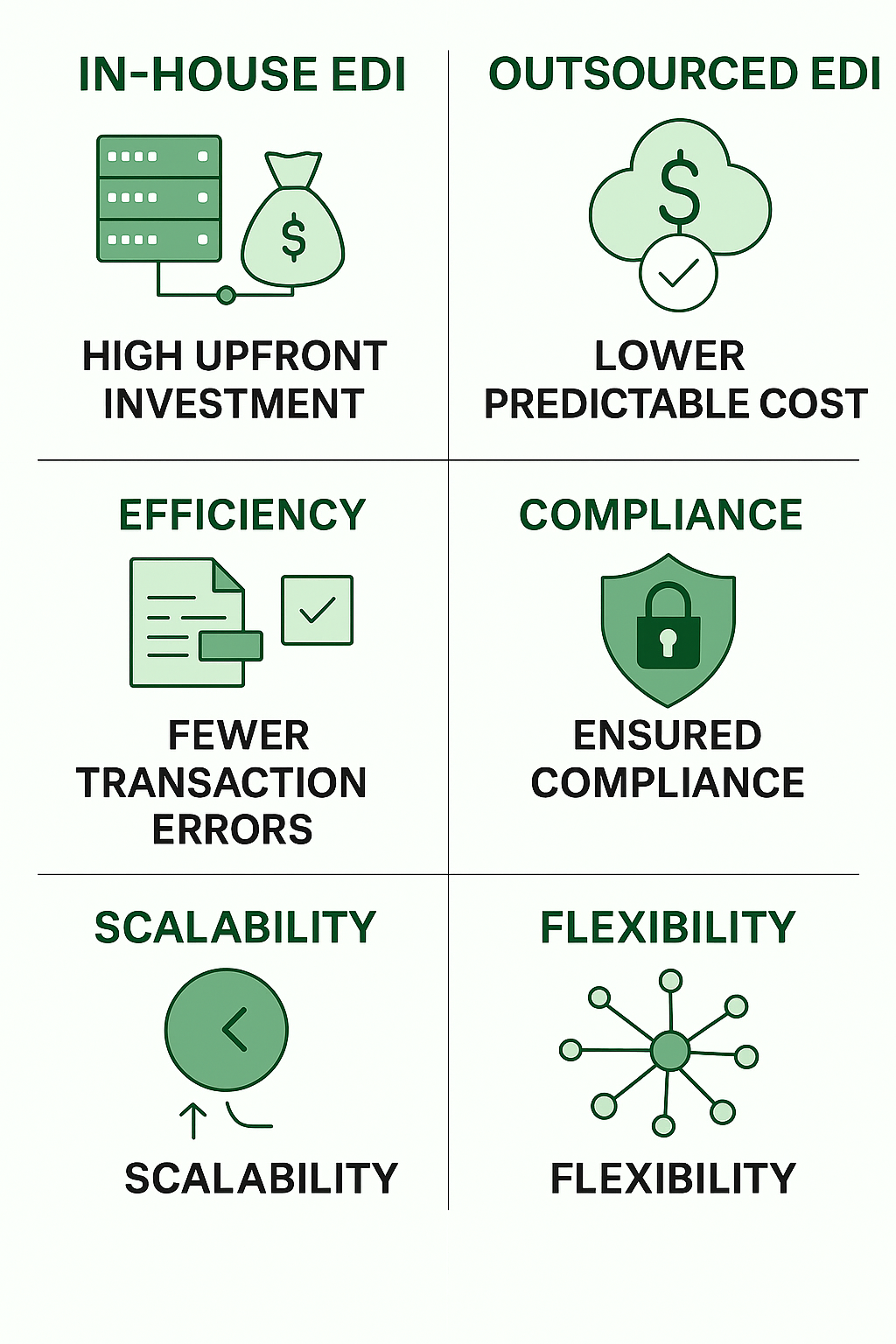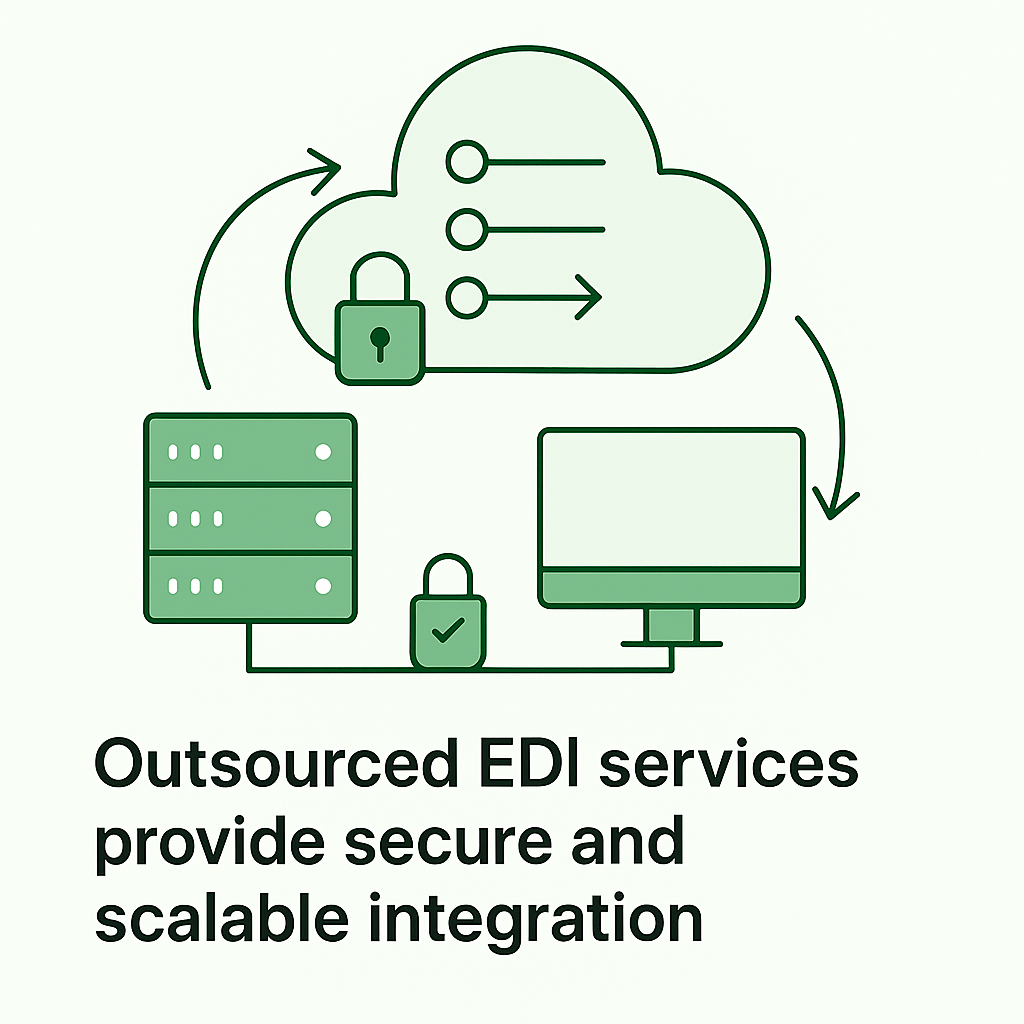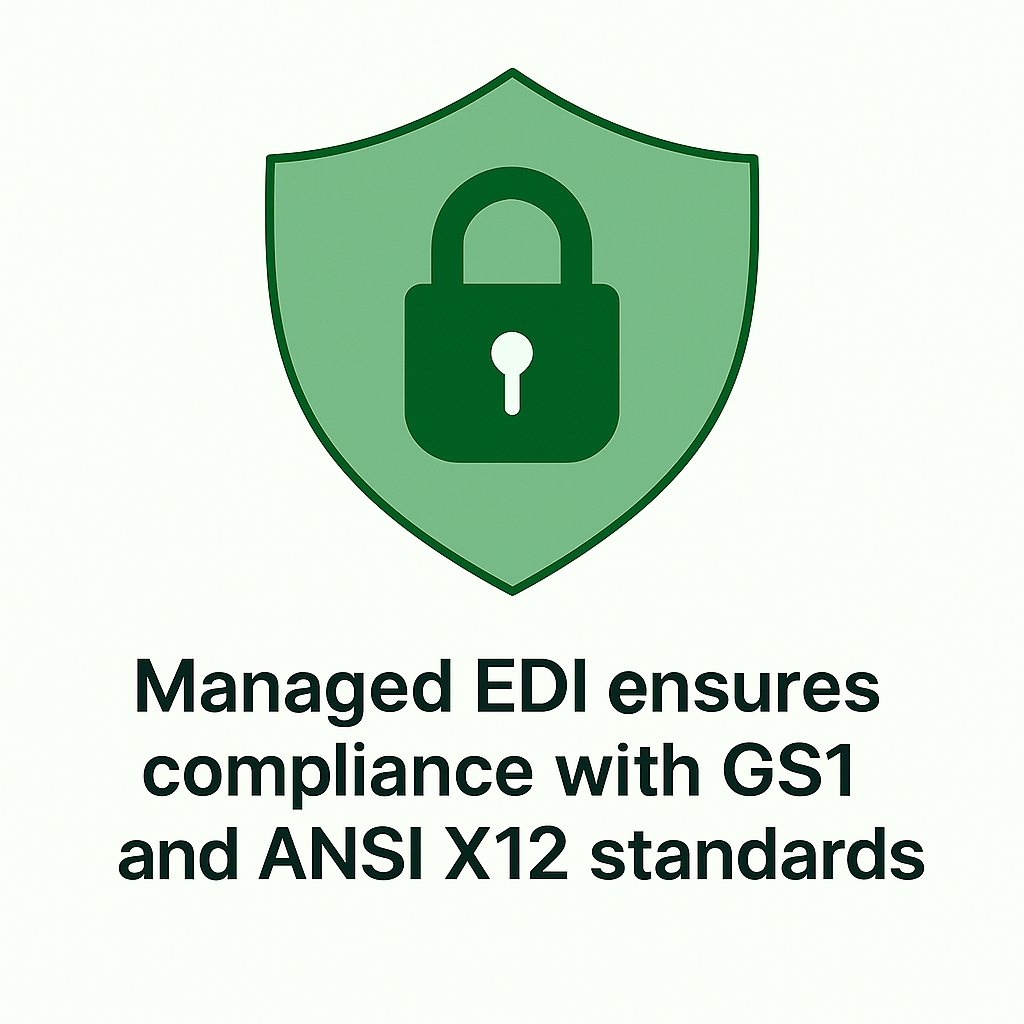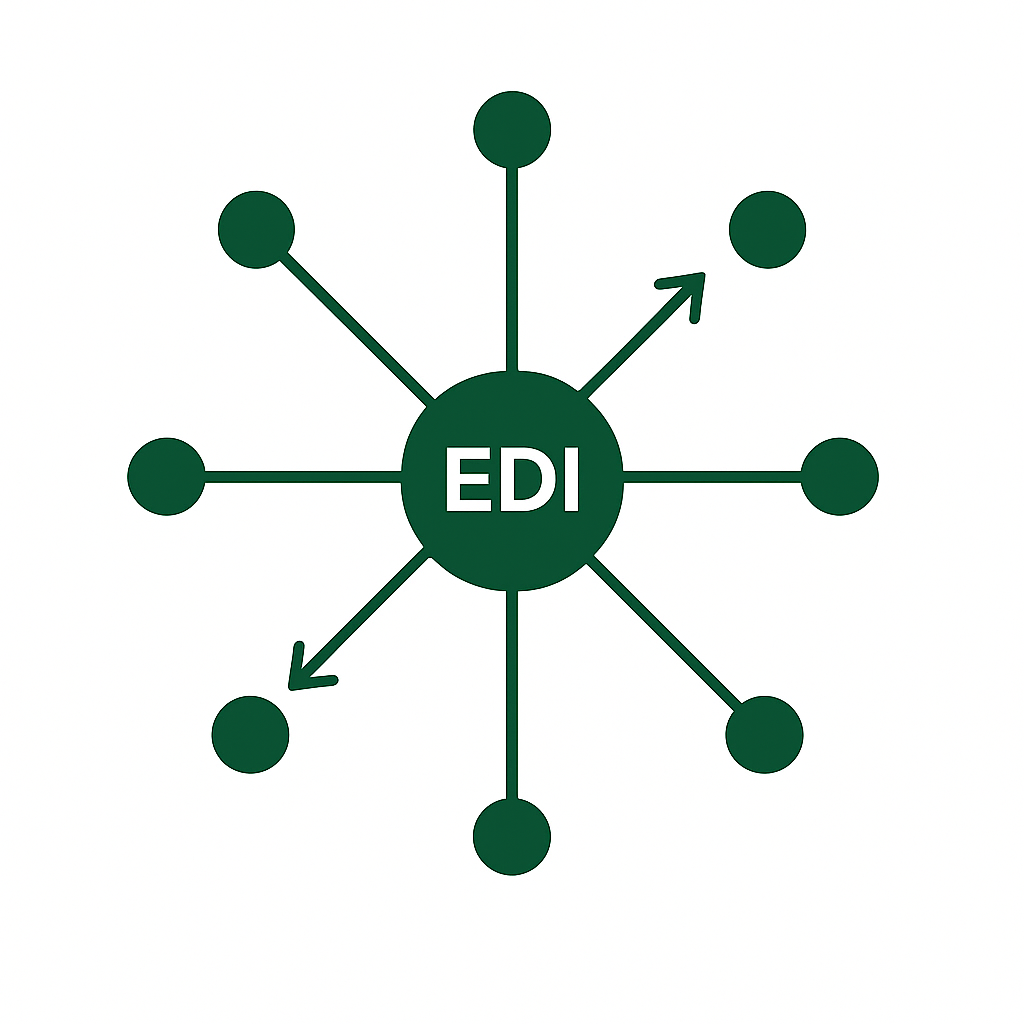In-House vs Outsourced EDI: Which Is Right for Your Business?
By Brian Eckenrod on
For many manufacturers and distributors, deciding between in-house EDI and outsourced EDI services is a strategic choice that impacts cost, speed, compliance, and scalability. The wrong model can inflate spend, increase chargebacks, and slow onboarding. The right model reduces errors, accelerates growth, and frees up IT. This guide compares both approaches so you can make a confident decision.
What Is In-House EDI?
In-house EDI means your team licenses and runs EDI software, builds and maintains maps, onboards trading partners, monitors transactions, and handles support. You get full control and deep customization, but you also absorb staffing, infrastructure, and ongoing maintenance.
- Pros: Control, direct access to systems, tailored customizations.
- Cons: High upfront/ongoing costs, staff dependency, slower partner onboarding, upkeep of standards compliance.

What Is Outsourced (Managed) EDI?
Outsourced or managed EDI services shift the workload to a specialist that handles mapping, testing, onboarding, monitoring, error handling, SLAs, and compliance updates—all as a service. This turns EDI into a predictable operating expense with expert support.
- Pros: Predictable costs, 24/7 monitoring, faster onboarding, standards expertise (GS1, ANSI X12), reduced internal burden.
- Cons: Vendor reliance, subscription fees.

Cost Comparison: In-House vs Outsourced EDI
In-house EDI typically requires software licenses, servers/cloud, and specialized staff—plus time to build and maintain maps. Managed EDI replaces capex with opex, consolidates tooling, and reduces error-related costs. Many mid-market organizations realize 20–30% total cost savings versus in-house management.
Industry insight: Statista reports supply-chain inefficiencies can cost 9–20% of annual revenue. Automating data exchange through managed EDI reduces transaction errors (often up to 35%) and prevents costly delays and chargebacks.
Efficiency, Compliance & Security
In-house teams juggle mapping changes, partner requirements, and evolving standards—work that compounds as your network grows. Managed EDI centralizes this, applying best practices across partners and formats, while proactively monitoring transactions around the clock.
- Standards & interoperability: Align to GS1 and ANSI X12 to reduce mapping friction and compliance risk.
- Security: Enterprise-grade encryption and auditing improve resilience versus ad-hoc internal setups.
- Speed: Automation removes manual keying and error chasing, accelerating order-to-cash and procure-to-pay cycles.

Scalability & Time-to-Value
Each new partner adds maps, tests, certificates, and support. In-house teams are limited by available staff hours. Managed EDI providers scale onboarding across protocols (AS2, SFTP, VAN) and trading requirements, so growth doesn’t stall while you hire and train.

When In-House May Still Make Sense
- Very large enterprises with established EDI teams and 24/7 coverage.
- Highly specialized integrations where unique internal workflows matter more than speed.
- Strict data residency mandates that your organization prefers to control directly.
Decision Framework: Pick Your Best-Fit Model
| Criteria | In-House EDI | Outsourced (Managed) EDI |
|---|---|---|
| Cost model | Capex + staffing | Predictable opex |
| Onboarding speed | Team-limited | Provider-scaled |
| Compliance & updates | DIY standards upkeep | Provider maintains GS1/X12 |
| Monitoring & uptime | Internal coverage | 24/7 monitoring with SLAs |
| Scalability | Staff-constrained | Elastic growth |
Conclusion
The debate of EDI outsourcing vs in-house comes down to cost, speed, risk, and scale. For most mid-market manufacturers and distributors, managed EDI delivers faster ROI, fewer errors, and simpler growth—without expanding internal headcount.
Next step: Contact us to review your current EDI model and quantify the savings from outsourcing.
Comments are closed